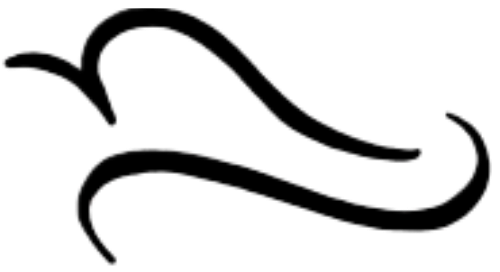[vc_row][vc_column][vc_column_text]
Relaxation is an activity that often gets lost in conversations. We like talking about how busy we are, what we’re up to, how we’re putting our time, effort and attention on productivity and doing things. We get into that habit. Maybe because we want to feel validated, that we are indeed doing something with our time on this small blue planet. Maybe we want to feel like we are constantly in motion. It’s a common topic of conversation, and often one of the first questions asked when meeting someone new is— “What do you do?”. With so much focus on doing, busy-ness and productivity, it’s easy to relate the idea of relaxing with inactivity, lack of productivity and wrap it around in a feeling of guilt.
I spoke with Tessa Nagtegaal, a Relaxation Therapist about her journey into wellness and gaining a new understanding on our relationship with relaxation.
Tessa was a travel agent for many years, working for a large, global company. The stressful, fast paced environment started to effect her personal health at a very young age. “I would get panic attacks regularly…and I would lose my patience easily, get angry at people…” Tessa elaborated some more, saying that she realized these patterns were harmful and that she didn’t want to keep living or working in a stressful way. After leaving her job, Tessa got interested in learning about foot reflexology and it’s beneficial effects on stress. Her interest in learning wellness techniques lead to exploring various therapies and healing practices. Eventually, she decided to start her own practice, focusing on relaxation and creating her role as a Relaxation Therapist.
Q: What is your definition of relaxation?
Being relaxed is to be open, and allowing. It’s a mindfulness, and being aware of everything that is happening to you and within you.
Q: Why is relaxation a challenge for many of us?
Through my work I’ve found that what stops people from relaxing is worrying. Worrying is just an activity of the mind that is avoiding a certain feeling— which is often the feeling of fear. So with my clients, I do a “negative fairytale” exercise. I teach them to put the pen down, stop writing and just observe their feelings.
Q: What kinds of people seek you for relaxation therapy?
I get clients from all walks of life. I have a man of 50 who is a carpenter, a business woman, and even my neighbor who is 25 and needs help relaxing. This is really nice because it’s a very diverse group.
Q: How do you get your clients to ease into relaxation?
I bring people into awareness of their feelings and create the space to openly sit and identify them. Once the feelings are identified, we go into experiencing them. Experiencing is the difficult part. The experience also carries different levels of expression. And the relief you get from sitting with your feelings and expressing them can happen in many ways. It can be that your mind quiets down completely, or by crying, or another kind of expression like shouting, screaming, and other physical reactions, that’s totally natural. And I provide the space where you can lovingly, gently, and safely have that release.
Q: How do you go deeper into these relaxation techniques?
Relaxation is a lot about not having to go to war with your thoughts, feeling or situations. I help people find a still point or an openness inside themselves where I help them recognize they don’t have to go to war with themselves about a feeling, person or situation. And these are the feelings which are causing stress. We work together on bringing awareness of what is happening to you and finding a way to take care of that rather than avoiding it.
What I tech people is how to take care of it fully. Focusing is a technique that is very body oriented, when an issue is coming up in your life you can use this technique to check the action of your body and sit with that feeling. What you’re doing is going a step further and linking yourself to feel this feeling instead of running away from it.
Q: What is something you want your patients to leave with after each session?
Many people see therapies like this as a quick retreat. With this approach, patients are just avoiding the source of the issue. It’s like mopping the floor underneath running tap water. You can keep mopping the water, but the the floor will always have more water falling on it. I help people find the tap and turn off the water.
I know from the bottom of my heart that doing a one hour massage or only engaging in relaxation practices once a week through a session and then going back to your normal life isn’t going to take away stress and worrying. I can help you release that tension for one hour once a week, but if you go back to your normal life and habits, it won’t work. It would be like trying to mop the floor underneath running water!
Q: What are some lessons you’ve learned through your work so far?
All we need, even if people are not aware of it, is to relax. And there’s always a way to relax even deeper than we already are.
________________________________
Tessa Nagtegaal is a Psychologist, Relaxation and Emotional Release Therapist based in Amsterdam. This article was written for the purposes of exploration and inducing conversation on alternate therapies. It is not intended to substitute professional medical diagnosis, advice or treatment. The responses in this article have been adjusted for grammar and structure for the purpose of portraying accurate translations.
[/vc_column_text][/vc_column][/vc_row]
